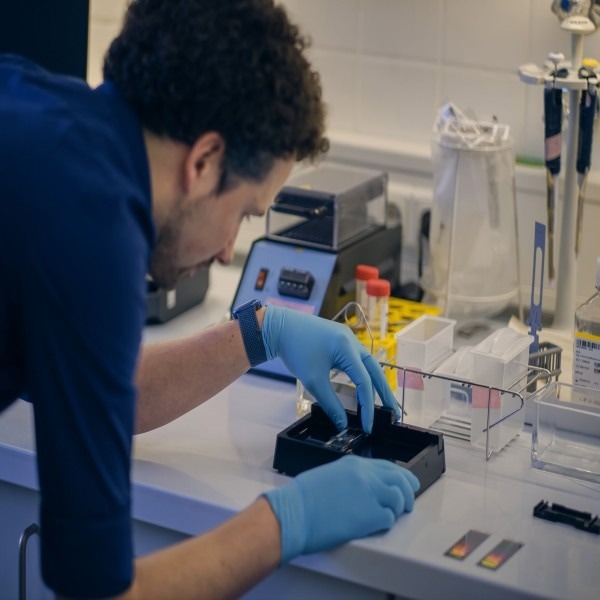Reviewed by Alex SmithNov 30 2022
Despite being confined to a small area, tumors in the paranasal sinus and the nasal cavity cover a wide range of tumor types. They can be challenging to diagnose because they frequently lack distinct patterns or outward manifestations. This is particularly true for cancers referred to as sinonasal undifferentiated carcinomas (SNUCs).
 Philipp Jurmeister analyzes samples. Image Credit: LMU / v.zign
Philipp Jurmeister analyzes samples. Image Credit: LMU / v.zign
Now, a team under the direction of Dr. Philipp Jurmeister, Professor Frederick Klauschen, and Professor David Capper from the Institute of Pathology at LMU, and the German Cancer Consortium (DKTK) partner sites in Munich and Berlin, has significantly improved diagnostics.
The team created an AI tool that reliably categorizes tumors based on chemical DNA modifications and places SNUCs, which previous methods had trouble identifying, into four distinct groups. This discovery could create new possibilities for targeted treatments.
Tumor-Specific DNA Modifications
The regulation of gene activity depends critically on chemical alterations to DNA. This includes adding an additional methyl group to the DNA building blocks (DNA methylation). Since the methylation pattern of the genome can be linked to the cell that gave rise to the tumor, researchers have previously shown that it is unique for various tumor types.
On this basis, we have now recorded the DNA methylation patterns of almost 400 tumors in the nasal cavity and paranasal sinus.
David Capper, Senior Consultant, Department of Neuropathology, Charité University Hospital
Despite the fact that these tumors are uncommon and only make up about 4% of all malignant tumors in the area of the nose and throat, the researchers were able to gather such a large number of samples because of extensive international collaboration.
Four Tumor Groups with Different Prognoses
The researchers created an AI model that categorizes the tumors into different groups for the analysis of the DNA methylation data in collaboration with Professor Klaus-Robert Müller’s machine learning group at the Technische Universität Berlin and the Berlin Institute for the Foundation of Learning and Data (BIFOLD).
Due to the large volumes of data involved, machine learning methods are indispensable. To actually recognize patterns, we had to evaluate several thousand methylation positions in our study.
Dr Philipp Jurmeister, Institute of Pathology, Ludwig Maximilian University of Munich
As a result, it was discovered that SNUCs can be divided into four groups, each of which has unique additional molecular traits.
Furthermore, given that the prognoses of the various groups are different, these results have clinical relevance.
One group takes a surprisingly good course, for example, even though the tumors look very aggressive under the microscope. Whereas another group has a poor prognosis.
Frederick Klauschen, Professor, Institute of Pathology, Ludwig Maximilian University of Munich
Researchers might also be able to create targeted new therapeutic approaches in the future based on the molecular characteristics of the groups.
Journal Reference:
Jurmeister, P., et al. (2022) DNA methylation-based classification of sinonasal tumors. Nature Communications. doi:10.1038/s41467-022-34815-3.